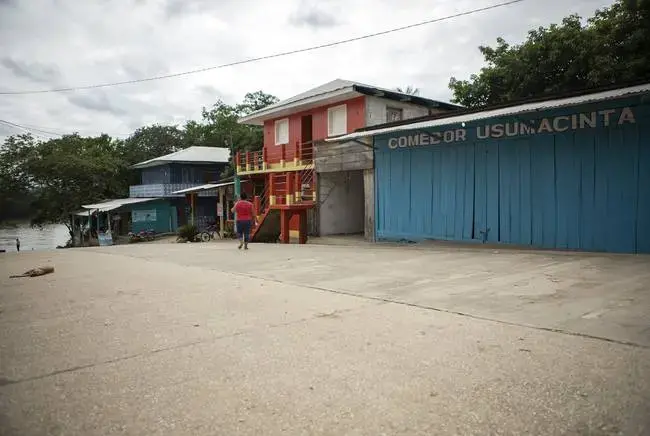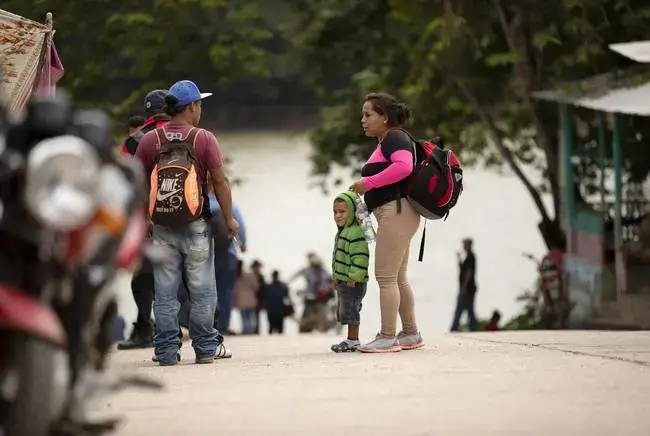
LA TÉCNICA, GUATEMALA — The tiny town on the edge of the river would stick out even if it weren’t so isolated, even if it didn’t rise up from the jungle like some forgotten Mayan village, only with motor boats instead of dugout canoes.
It got its start as a sustainable logging cooperative in the late ’70s, but a big wildfire ruined all that. Ever since, La Técnica, Guatemala, has been dedicated to what the locals call “tourism.” And it is tourism, sort of. Traditional tourists do regularly come through this remote patch of the Lacandon Jungle — mainly well-off Mexicans, Americans and Europeans.
But La Técnica is more launching pad than destination, and more recently it has specialized in a different kind of tourism: human migration. A few months ago, this town was humming with it. There’s no official count, but local business owners say hundreds a day — and sometimes well over 1,000 — were passing through La Técnica into southern Mexico and, after that, all points north.
Not anymore. On a mid-November afternoon, all the boats were tied to the dock, waiting for passengers. Two boat operators were calmly assessing the condition of an outboard motor. A couple of dogs lazily wrestled in the middle of La Técnica’s main strip, its only paved road, which descends like a boat ramp down to the broad Usumacinta River dividing Mexico and Guatemala.
“Cambio! Cambio! Cambio!” Rolando Argueta Lopez called out. A bus had just arrived, but there were no takers for his money exchange services. His restaurant, Comedor Jehova, sat all but empty. It used to be full.
“People are worried,” Argueta Lopez said. “Not only here but in all of Guatemala, and even in Mexico, because when there are many migrants, the bus owners, the taxis — everyone is making money. Today, it has all stopped.”
Migration can be a fickle business, so this isn’t the first time a dip in “tourism” has hit the local economy. But in the last year, there was a major seesaw — first a peak, then this valley. A flood, then a trickle.
And if there is one name on the tips of their tongues, the name of the man they blame the most, it’s this one: Donald Trump.
No migrants, no business
Despite its tiny size, La Técnica, population 700 or so, is a major strategic outpost in the human smuggling trade. It sits in a rainforest clearing on the banks of the Usumacinta across from Frontera Corozal, Mexico, and about three hours south of Palenque, which draws a steady flow of tourists because of the nearby sparkling blue waterfalls and well-preserved Mayan ruins.
Frontera Corozal draws some of those international travelers, too. That’s because the town has a little marina with motorized dinghies that will take tourists to the world-class but remote ruins of Yaxchilan, an ancient Mayan city known for its decorative stone sculptures. But the boat owners couldn’t survive on the trickle of tourists from Palenque alone.
While on any given day a handful of gringos might plunk down $70 to go 45 minutes up river to Yaxchilan, migrants pay $2 to $3 each — all day long when business is good — for the one-way, five-minute trip from La Técnica to the Mexican side of the river. In seconds, the boats empty out, the migrants slide into taxis or personal cars, and off they go toward the U.S. border.
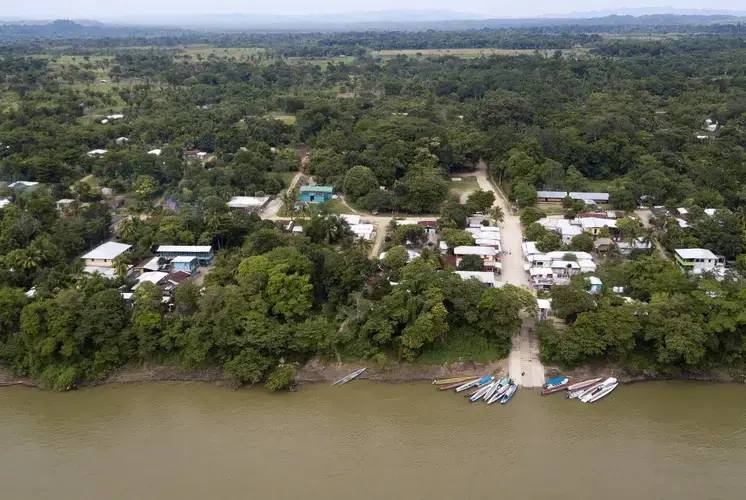
Last fall, when Trump was angrily tweeting about a massive migrant caravan that broke through the gates of a bridge connecting Guatemala and Mexico near Tapachula — about 12 hours south of here — migrants were pouring through La Técnica essentially unnoticed. There were no immigration officials to stop them, no throng of international media to record their movements and no president tweeting about them.
Then, business was booming. The “hotels” — flophouses that go for about $10 a night — were at capacity. The restaurants were overflowing with migrant families, typically in the company of their smugglers. And every hour, boats would leave the village for the short ride to Frontera Corozal.
“A year ago, we didn't have enough space for everyone,” said Marixa Garcia Ramos, a cook at the Cepi Pollo restaurant and hotel. “They would be in here on the floor in the corridor. Now weeks go by without anyone entering the hotel.”
A few months ago, amid a crackdown stretching from Washington to Mexico City, traffic began to slow — and then it all but stopped. Two restaurants here have already shut down, and Garcia Ramos fears Cepi Pollo will soon follow.
Her job is terrible by almost any measure: She makes $6.50 a day working from 5 a.m. to 9 p.m. (or later if people are still eating), and she never has a day off. Still, Garcia Ramos says it’s better pay than most cook jobs, and if the migrants don’t start coming back soon, she’ll be looking for work.
“If there are no migrants, there are no sales,” she said inside the empty restaurant. “That's to say the economy of La Técnica is the migrants. If there are migrants, there is business. If there are no migrants, there is none.”
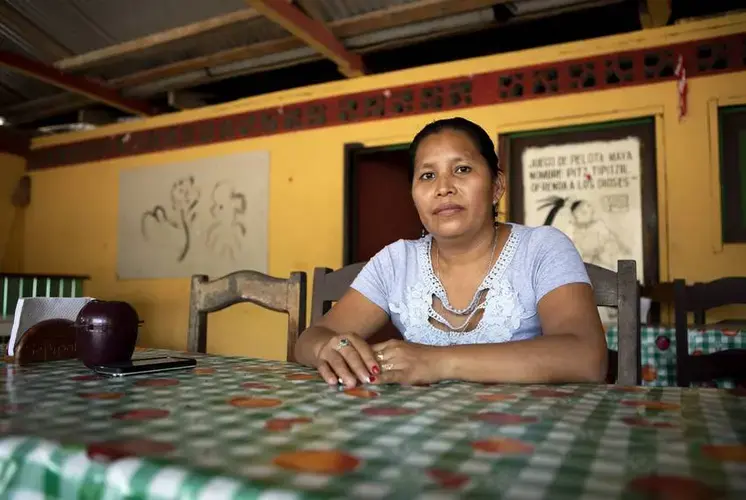
Border Arrests Plummet
Experts and people on the ground here say there are two big reasons the traffic died down, and both are tied to Trump administration initiatives: the “remain in Mexico” program that requires people to wait out their asylum cases south of the U.S. border, and Trump’s threat to slap tariffs on Mexico unless it cracked down on migrants crossing through the country on the way to the United States. Mexico’s leftist president, fearful of economic turmoil, responded by putting thousands of uniformed troops from his fledgling National Guard — ostensibly created to help combat cartel-fueled violence — on migrant patrol duty along the country’s international borders.
The results are stark. The number of migrants taken into custody at the U.S.-Mexico border went from a high of 144,116 in May down to 42,649 in November, a 70% drop, U.S. Border Patrol figures show. It was a remarkably busy year even with the downturn: A record number of migrant families crossed the border in fiscal 2019, and the total number of migrants (including families and individuals) taken into custody at and between the ports of entry during the period — nearly 1 million — reached the highest level since 2007.
The remain in Mexico program in particular — a policy formally known as Migrant Protection Protocols — has changed the calculus for migrants in a way that previous efforts failed to achieve.
Before MPP, those traveling with families had the expectation that they would be freed by U.S. authorities after a few days. That’s because under the Flores agreement, a court settlement aimed at ensuring humane treatment of migrant kids in federal custody, undocumented families with children apprehended in the U.S. generally must be released from federal custody within 20 days.
So in recent years, most asylum-seeking families were able to cross the border, ask for asylum, and then live and work in the United States while their cases inched their way through clogged immigration courts. For many, it was worth the hassle and expense even if they eventually lost their asylum cases.
Now tens of thousands of migrants are being sent right back across the border to Mexico — where there’s no guaranteed shelter, limited access to legal services, and the ever-present peril of falling into the hands of cartels who kidnap and extort them for every peso they can shake loose. That dramatically increases the risk — and reduces the payoff — of migrating.
“This is a huge change. You're now waiting for your asylum cases in Mexican border cities versus inside the United States, beginning to work in U.S. jobs, sending your kids to U.S. schools,” said Stephanie Leutert, a migration expert at the University of Texas at Austin. “It's a very precarious situation. And so for this population, you're seeing them just choosing to not go north anymore — to look for other options.”
The sudden shift has made Trump a four-letter word on the streets of La Técnica, where businesses catering to migrants blame him for the slowdown even if they are unfamiliar with the legal intricacies of the MPP program his administration launched.
Before the crackdown, “they gave [migrants] a benefit if the mother and father came with a child,” explained Oscar Marroquin, who owns La Mexicana restaurant in La Técnica.
“Trump said … no more minors,” he went on. “Since then, people stopped coming.”
Marroquin laughed when asked if the American president got what he wanted.
“It helped Trump,” he said. “But not us.”
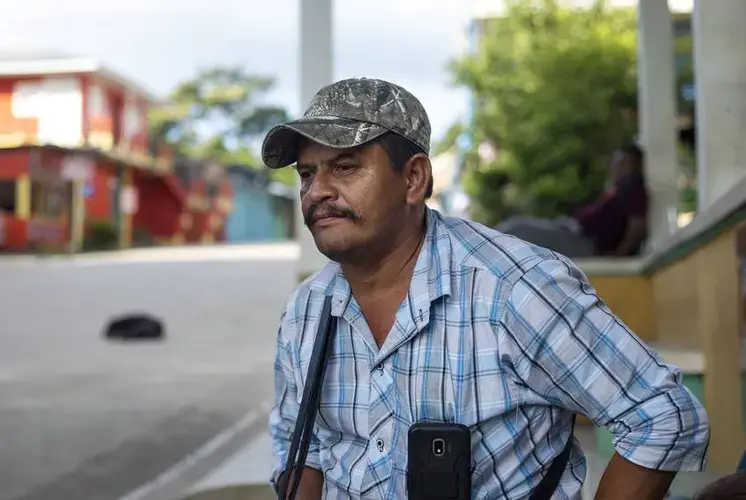
“I Heard the Shot”
In the wake of the international crackdown, traditional migration patterns have begun to reemerge. By October, Mexico returned to its familiar role as the leading single source of undocumented migrants, displacing Central Americans who made up a surge of “family unit” crossings from the Northern Triangle countries (Guatemala, Honduras and El Salvador) that overwhelmed U.S. authorities earlier this year.
Meanwhile, shelter operators in Mexico say they’re seeing on the ground what statistics have begun to show: It’s mostly single adults making the journey now.
Oscar Cruz Martinez runs the Most Holy Trinity Catholic shelter in Nuevo Francisco Leon. It’s the first shelter migrants reach after leaving La Técnica; given the influx in 2019, he’s expanded it with help from the United Nations.
“In the last few months, we have received more men and more young people than women,” he said. “In the last year, we received a lot of families, many kids, many women. That has gone down a lot.”
Another big change: Many of the migrants, including asylum-seeking families, are scaling back their travel ambitions.
“In the past years, their goal was to get to the United States. All of them,” Cruz Martinez said. “Now if it's not the United States, it's Mexico, because they say the borders are dangerous, that the president of the United States increased security and they can't get in.”
One family that recently migrated through La Técnica demonstrates the new reality. Bus driver Walter Sanchez Reyes, 40, fled Tegucigalpa, Honduras, with his wife and five kids after a Barrio 18 gang member shot him in the jaw with a chrome-plated pistol in July. During an interview in Palenque, Sanchez Reyes spread out bloody pictures, news articles and X-rays on a banquet table to prove he was telling the truth.
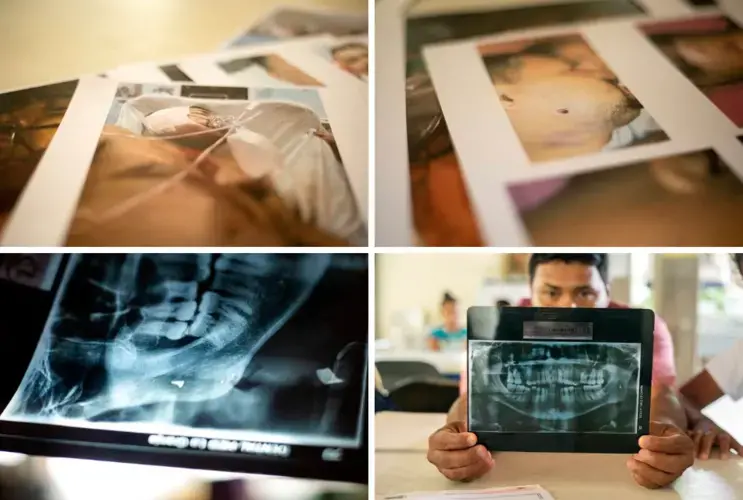
“I heard the shot,” Sanchez Reyes recalled. “I saw everything in slow motion, like empty, and I could hear an echo.” He managed to open the door to the bus and dodged a hail of bullets before being taken to the hospital, where he stayed a month.
Although he’d like to reach the U.S. eventually, Sanchez Reyes was already deported from the U.S. once, in 2008, and for now he and his family feel safe in Mexico. He turned himself in to immigration authorities near Palenque last month and is working there while he waits for a visa.
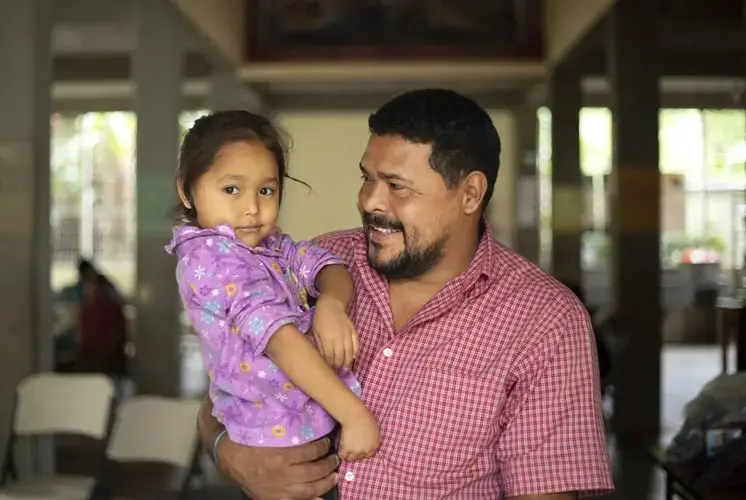
“I will do what is possible to have them see my case [in the U.S.],” Sanchez Reyes said, “and if it is not possible, I will stay in Mexico because I cannot go back to Honduras.”
“People Always Come”
This time last year, migrant families like Sanchez Reyes’ weren’t weighing their options in southern Mexico. They were getting to the U.S. border as fast as they could, and they telegraphed their successes to friends and relatives back home — via WhatsApp messages, social media posts and phone calls, said Leutert, the UT researcher.
Now she says that feedback loop is playing a different tune: “Regardless of if you're a family or an individual, you are going to be sent back to Mexico. And that message has also made a mark and has been heard in Central America.”
That may be just what Trump wanted, but Leutert said it’s come at a high human cost, as migrants endure shakedowns, sexual violence and even murder in dicey border towns while they await their turn in U.S. immigration court.
“If you're looking only at the number of people who are arriving at the border, yes, you can claim success,” she said. “But if you begin looking at the conditions these people are in, the crimes that are being committed against them … the picture doesn't look as great.”
Back in La Técnica, old timers like Marroquin, who owns a tour boat in addition to La Mexicana restaurant, say they’ve lived through both boom times and bust, and they figure this downturn will pass just like the others have.
Marroquin has lived in La Técnica since 1994 and doesn’t plan on leaving. He noted there are still Mayan ruins nearby in Yaxchilan, Bonampak and Tikal to draw stray tourists. And this town will always be just a stone’s throw from Mexico.
“Because we're on the edge of the river, people always come, just like you came," he said. “This is the best border crossing between Guatemala and Mexico. You can ask around: It's the best.”





